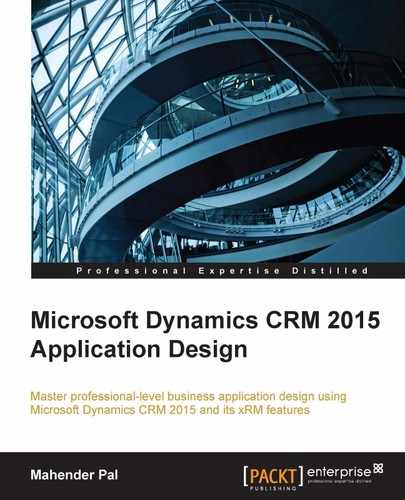Actions were introduced in CRM 2013; they allow us to design our custom messages like out-of-the-box events to execute our custom business logic. We can use actions to define our complex logic. Before actions there was no direct way to call server-side logic using client-side scripting. But actions allow us to define our own messages and call them using a SOAP request. We can't call them using OData end points. Once an action is defined, we can also register a plug-in on the action. We will discuss plug-ins in a later chapter.
Actions can be designed using the process designer; we can navigate to Settings | Processes to create a new action. Actions can be associated with a single entity or can be global, where they can be used with any entity. As soon as an action is created, CRM creates a corresponding synchronous workflow.

Actions always run under an organization scope, so we can't bind an action to run under other scopes such as user and business unit, and they always execute in the security context of the calling user.
Actions also allow us to use input and output arguments, so while designing we can configure an input or output argument that can used while calling actions.

Once an action is designed we can call it in three ways:
- Using server-side code
- Using client-side code
- From a workflow
Calling actions from workflows is the new feature added in CRM 2015. Actions are synchronous and are executed under stage 30 of the execution pipeline. We will be discussing execution pipeline in greater detail in a later chapter, but if you want you can refer to https://msdn.microsoft.com/en-us/library/gg327941.aspx now.
We will be working with actions in more detail in a later chapter.
